Table of Contents
Which Colors Do I Need?
I find that using a limited palette of around 6 color plus white makes color mixing less complicated. You can read about the colors I recommend in the post The 7 Colors You Need to Begin Painting with Acrylics.
You may notice that there’s a total of 17 colors that I used to mix the colors for this chart. I include them because I understand that not all artists are interested in adopting a limited color palette. Additionally, every artist has their own favorite pigments that they enjoy working with. Your own personal preferences will influence the colors that you decide to use.
I can’t include all artists colors on the chart because there’s not enough room. It would also be a very expensive project because there’s over 100 colors to choose from. Instead, the chart includes the most common pigments that artists use regularly.
Below is a list of the 17 colors that I use to mix all of the colors on the chart. I don’t recommend buying all 17 of these colors. It’s expensive and unnecessary because you can mix a full range of colors with fewer colors than what’s listed below.
- Alizerin Crimson Hue Permanent
- Cadmium Free Orange
- Cadmium Red Medium
- Cadmium Yellow Light
- Cadmium Yellow Medium
- Carbon Black
- Cerulean Blue Hue
- Cobalt Blue
- Dioxazine Purple
- Hansa Yellow Medium
- Light Green Permanent
- Phthalo Blue (Green Shade)
- Phthalo Green (Blue Shade)
- Pyrrole Red
- Quinacridone Magenta
- Titanium White
- Ultramarine Blue
Directions for Mixing the Colors
It may be obvious how to mix a color by just looking at the recipes. But I thought it would be useful to offer an explanation for each color mixture, and to provide more instructions. The instructions below follow the color chart starting from the top left.
I include a variety of recipes for mixing similar colors. This is so that it increases the odds that you’ll have at least one option for mixing each color. Another reason is that some mixtures result in opaque colors while others are more transparent. For example, you can mix an opaque orange or a transparent orange, depending upon which pigments you choose.
Orange
Opaque Orange
The most saturated orange on the color chart is Cadmium Orange. It has more saturation than the oranges that I mix from scratch. It’s also a very opaque pigment. The difference in saturation is something that’s more obvious when you compare actual paint samples next to each other.
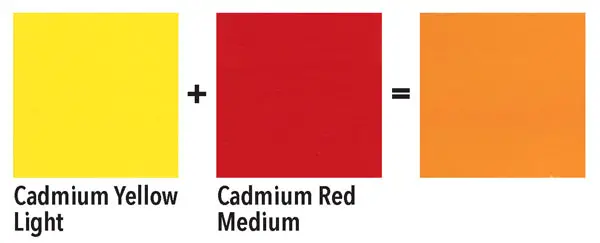
Mixing Cadmium Yellow Light with Cadmium Red Medium will produce an opaque orange too, although it doesn’t quite have as much saturation as Cadmium Orange but it does have a similar opacity.
If color is an important part of your work, then the Cadmium Orange may be worth it. Paintings that are abstract or have a graphic and colorful style may benefit from using the most saturated colors available.
You’ll have to decide for yourself which orange to use. It depends mostly upon the subject matter and your style. The oranges that you can mix will probably be adequate for most subjects.
Transparent Orange
Transparent colors work well with glazing, so there are times when the transparent orange is desirable. Obviously, if you want to mix a transparent orange, you’ll have to mix it from transparent colors.
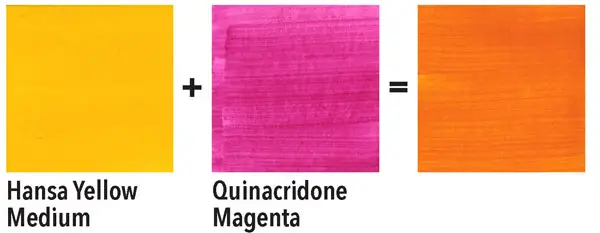
Hansa Yellow Medium and Quinacridone Magenta are perfect for mixing transparent orange. You only need to add a small amount of the magenta to the yellow to make orange.
If you continue to add Quinacridone Magenta, it will eventually turn red. This can be found on the chart right beneath the orange made from the same colors. However, it may be wiser to start with a pile of Quinacridone Magenta and add a small amount of Hansa Yellow Medium to it. The result is a red that has a hue similar to Cadmium Red Medium.
There are transparent and opaque options for most of the other colors. Typically, the cadmiums are the most opaque.
Green
Green is a tricky color for landscape painters because if you mix a green with too much saturation, it can look unnatural. It’s helpful to learn how to dull a green, or to at least figure out which blue and yellow will create a subdued green.

As I mentioned in the introduction, you can create a muted green by mixing black with yellow. Many painters use the Zorn palette which consists of Yellow Ochre, Cadmium Red Medium, Ivory Black, and White. This small selection of colors isn’t as limiting as you think. Artists who adopt this palette mix yellow and black to make green.

Another approach is to add a warm color to the green that you want to subdue. For instance, you can create a dull green by mixing Cadmium Orange with Light Green Permanent. How much orange you add depends upon how much you want to dull the green.
You can use other warm colors to dull down a vivid green. Cadmium Red Medium, Quinacridone Magenta, and Alizerin Crimson are good candidates for mixing with green in small amounts. It will make the green less vivid. If you add too much, it will turn brown as shown in the mixture of Cadmium Red Medium and Light Green Permanent. This brown mixture is located at the top right corner of the chart.

When you mix your own green, the blue that you choose to mix with yellow has an influence on the saturation of the green. Ultramarine Blue is biased towards magenta so there’s a warm color that is already built in to it. When you mix Ultramarine with yellow the green is less vibrant than if you were to use Phthalo Blue.
You can also try using a yellow that leans towards orange, such as Cadmium Yellow Medium, and mix it with Ultramarine Blue.
Turquoise
You can make turquoise by mixing Phthalo Green with Titanium White. If you don’t have Phthalo Green you can try mixing Phthalo Blue with yellow, and then lighten it with Titanium White. It will create turquoise, but it won’t be quite as vivid as the Phthalo Green and Titanium White.
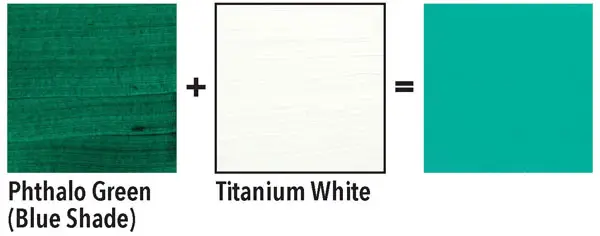
If you absolutely need the most saturated turquoise available, then you can buy a tube of Cobalt Teal or some other form of turquoise.
Purple
Magenta Is the Secret to Mixing Purple is a very detailed post about how to mix purple. It includes 6 recipes for mixing purple, substitutes for Dioxazine Purple, how to mix lavender, and more.
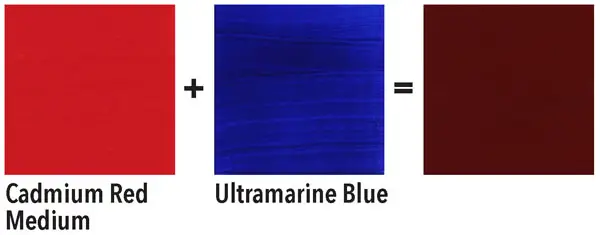
To summarize, the trick to mixing purple is to use Quinacridone Magenta instead of red. If you mix red with blue, you end up with a brown color as shown above. Actually, mixing Ultramarine Blue with Cadmium Red Medium is one of the formulas for mixing brown on this chart.
Red contains yellow and that makes the purple turn brown when you mix red and blue. You can mix red by adding Hansa Yellow Medium to Quinacridone Magenta. Since magenta doesn’t contain the yellow, mixing it with blue will create a vibrant purple.
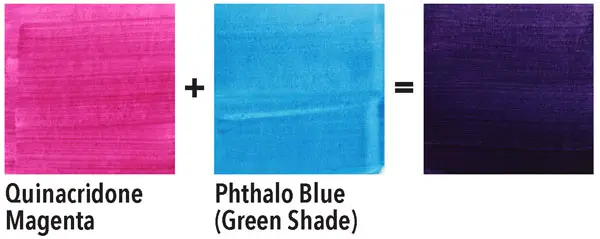
You can mix other blues with Quinacridone Magenta to create purple. Ultramarine Blue, Cerulean Blue, and Cobalt Blue work well. I find that mosts artists have Ultramarine Blue or Phthalo Blue on their palette.
Brown
Below are a few way simple ways to mix brown. Check out my ultimate guide to mixing brown if you want a more in depth demonstration that includes a video.
A common recipe for mixing brown is to mix all three primaries. Of course you have to define what the primaries are, and you have to figure out the proportions of each pigment to mix. So, it’s not quite as simple as mixing all three primaries together. I also use specific primaries to mix black and neutral grays.
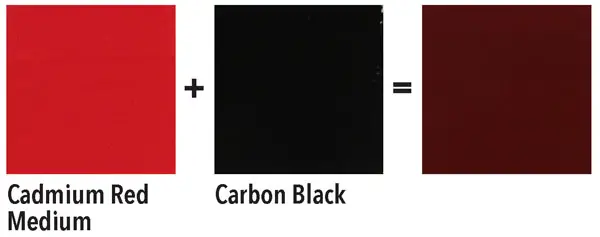
Since I’m restricting this color chart to mixtures of 2 colors, you may think that it would be difficult to come up with a variety of formulas for brown.
There are many ways to mix brown from 2 colors. The simplest is to mix black with any red. I chose Cadmium Red Medium but Pyrrole Red, or Naphthol Red Light will work too. Mixing red with black creates a chocolate brown.

If you don’t have black on your palette, mixing red with Ultramarine Blue will create a similar result. Red and blue doesn’t make purple, which I explain in the section above about mixing purple.
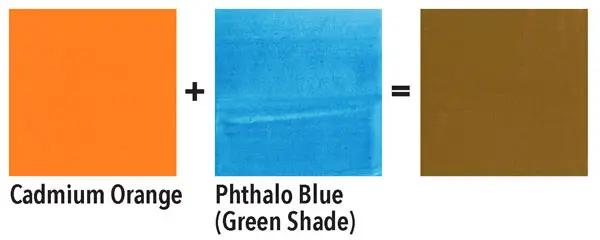
You can create lighter browns by mixing a small amount of Phthalo Blue with orange. I use Cadmium Orange but other oranges will work too, including the ones you mix from scratch.
If you think of brown as dark red or dark orange, you should be able to remember how to mix it.
Pink
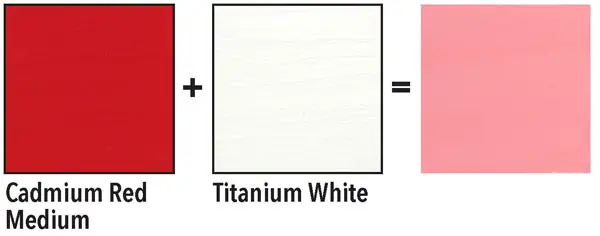
The most common recipe for pink is to mix red with white. For example, you can mix Titanium White with Cadmium Red Medium. You can also use other reds such as Pyrrole Red, or Naphthol Red Light. This creates a warm pink that has a slight salmon tint. This pink may be the color you’re looking for.
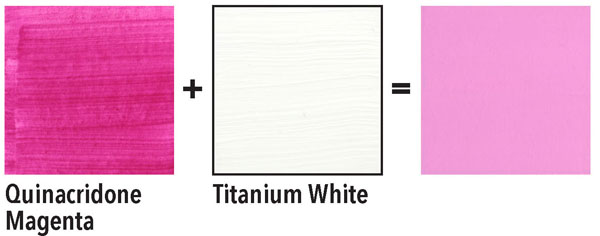
However, there are some pinks that you won’t be able to match by mixing red with white. Very bright pink flowers are often a cool pink instead of a warm pink. Try mixing Quinacridone Magenta with Titanium White to create a cool pink.
The reason why red creates a warm pink is that red contains yellow. As I stated previously, you can mix Quinacridone Magenta with Hansa Yellow Medium to create red. It’s the yellow that makes the pink appear more warm. So you can eliminate the yellow by using magenta instead of red.
Black
I excluded recipes for mixing black paint from the color chart because I have written extensively about it in my post 11 Ways to Mix Black Paint. There are so many formulas for mixing black that it would take up too much space on the chart. I think it’s more pragmatic to provide color mixing recipes for a variety of colors instead of recipes for mixing black.
Some of the most popular recipes for mixing black are:
- Burnt Sienna and Ultramarine Blue
- Burnt Umber and Ultramarine Blue
- Phthalo Blue and Vat Orange
- Phthalo Blue and Pyrrole Orange
Many artists prefer to buy a tube of black. The two most popular are Ivory Black and Mars Black. There is a difference between them. You’ll have to try them both out to decide which one works best for you.
There are some benefits to mixing your own black. You can mix a transparent black for instance, Another option is to mix a black that has a little bit of color to it, to make it more interesting.
Conclusion
Color mixing can be frustrating and perplexing for beginners. Part of this is because much of the basic color theory that we learn in school is incorrect or doesn’t apply to painting. What really helps you to improve is to practice mixing colors. You can learn through trial and error, but learning is much more effective if you have a strategy.
That’s why I created this chart. When you want to mix a specific color, you can look it up on the chart instead of having to mix colors through the trial and error. The chart should also help you to avoid many common color mixing traps. For example, if you want to mix purple, most people reach for red and blue. But this chart shows that if you want to create a vibrant purple, you should use magenta instead of red.
It can be difficult to find time to learn how to paint, so it’s helpful to have a simple resource like this so that you can minimize the color mixing failures and maximize the time you have for painting.
Usage
Please feel free to print this chart for your own personal use in your studio. This is why I made the chart–to help artists learn more about color mixing. So, go ahead and hand it out to students in your classes or workshops.
Sharing Online
If you want to share this chart online, please link directly to this page instead of the link to the PDF itself. Pinning the chart on Pinterest is encouraged as long as the link is directed to this page. The same applies to other social media sites.
Restrictions
The following activities on the list below are NOT allowed. Basically, these are situations where someone is trying to profit from selling the chart, or violates the copyright.
- Downloading the chart and redistributing on other websites
- Selling prints of the chart
- Selling the PDF of the chart
- Uploading the chart to print on demand sites
- Altering the chart and passing it off as your own


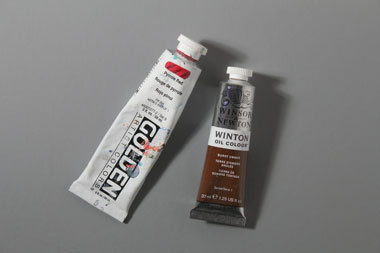

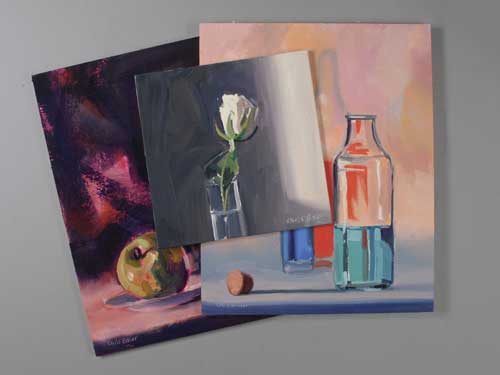
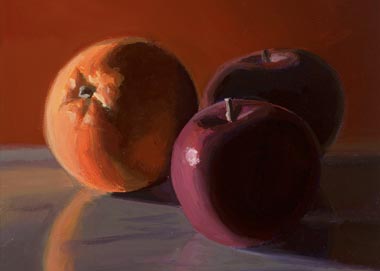

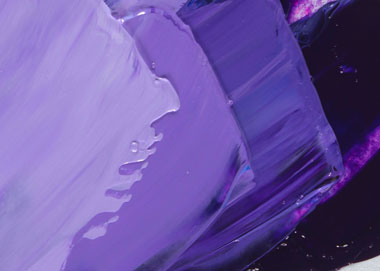
I am impressed with what I have learnt. Thanks alot
great hope is saves some money and better lansdcapes
thank you,, now im try for mix green and orange in rgb mode computer. every people say,, we can got brown. but i got mustard yellow. is right ?
Mixing colors in RGB mode on a computer is very different than mixing colors with paints, so my chart won’t help much. For example, mixing pure red and pure green makes yellow in RGB. You can mix colors by inputting the values for Red Green and Blue. R79 G0 B0 will make a chocolate brown and R134 G70 B0 will make a brown that’s more orange. I hope that helps!
I’m really loving the theme/design of your website.
Do yyou ever run into any browser compatibility issues? A number of
my blog readers have complained about my wwbsite not operating
correctly in Explorer bbut looks great in Firefox. Do yoou have any tips to help fix this issue?